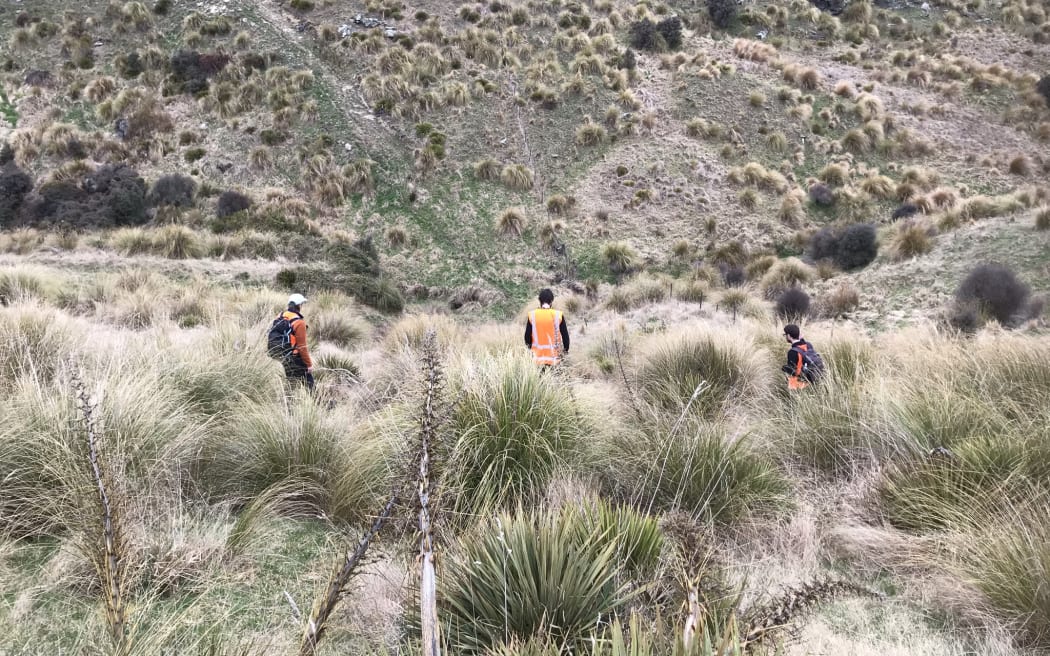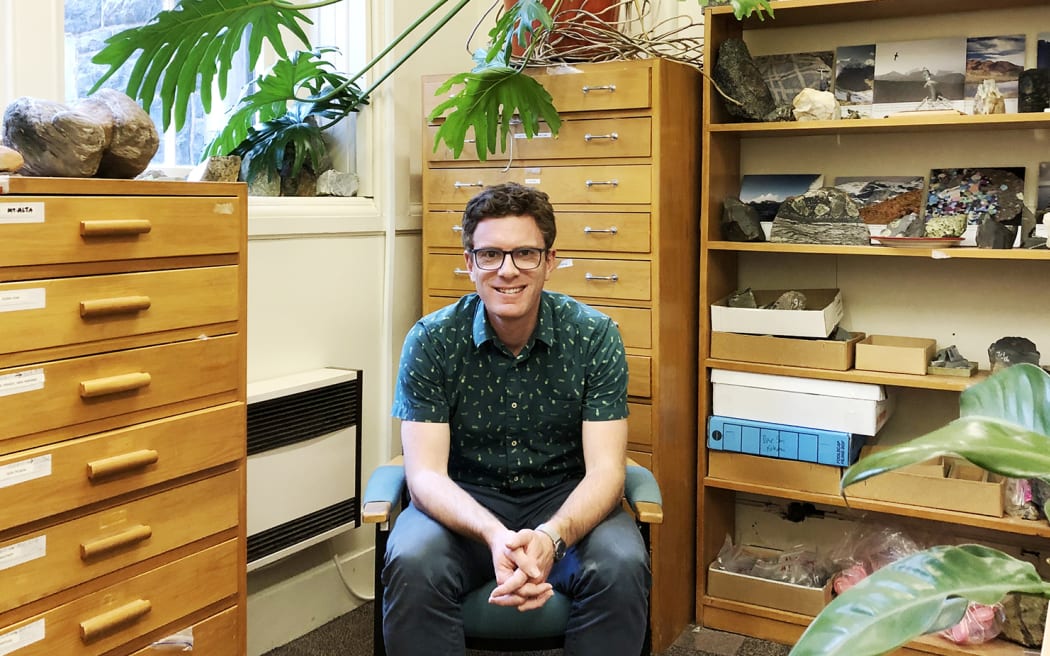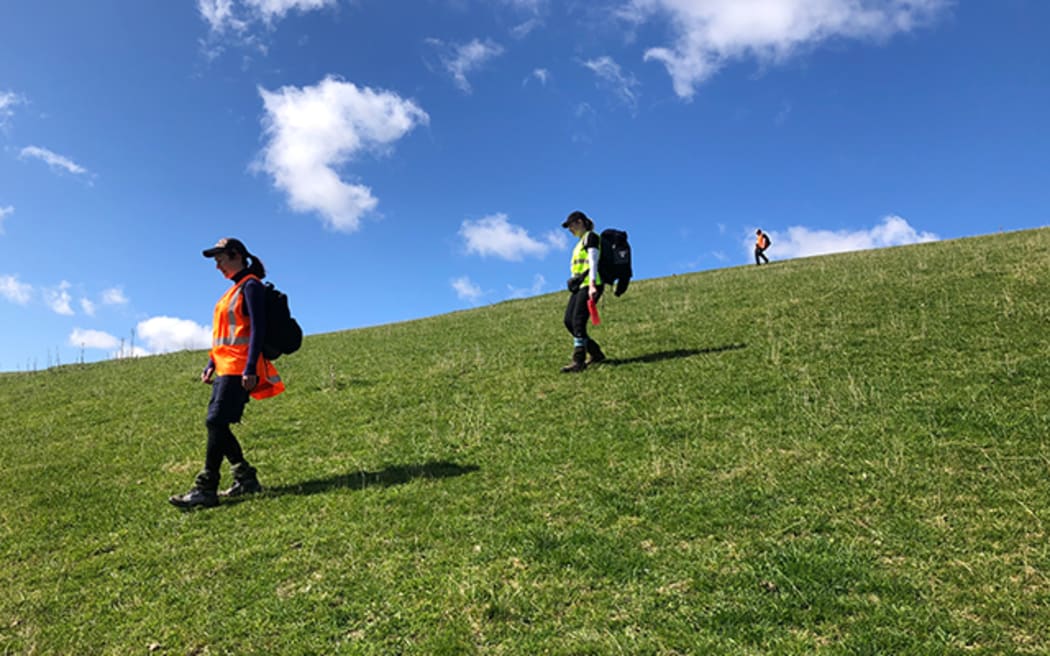Our summer science series continues this week with an episode of The Otago Chronicles podcast, hosted by Max Balloch. In this episode, Max talks to Associate Professor James Scott from the University of Otago Department of Geology about looking up at the night sky and the hunt for what would’ve been New Zealand’s 10th meteorite.

Students and researchers comb an area near Dunedin looking for the meteorite. Photo: Claire Concannon,
Follow Our Changing World on Apple Podcasts, Spotify, Stitcher, iHeartRADIO, Google Podcasts, RadioPublic or wherever you listen to your podcasts
At a few dozen schools across New Zealand, special cameras are keeping watch for meteors streaking across the inky darkness. They’re part of a network called Fireballs Aotearoa – detecting meteors and connecting schoolkids to the night sky – established in early 2022.
Most meteors – space rocks usually originating from the asteroid belt – burn up as they fly through the atmosphere, dying in a blaze of glory. A handful might make it to the Earth’s surface intact.
On 28 August 2022, three of the cameras picked up a fireball – an especially bright meteor that “winks out” just above the ground. “We couldn’t believe that it had landed right in the middle of our camera network, that we’d just deployed,” says James.

Associate Professor James Scott. Photo: University of Otago
The meteor’s trajectory was calculated, narrowing its potential point of impact to a farm west of Outram in Otago. Once a meteor touches the Earth’s surface, it’s known as a meteorite.
A two-day meteorite hunt ensued – about 100 students, researchers, and volunteers scoured the countryside for what would be New Zealand’s tenth meteorite.
Listen to the episode to hear what they did (or didn’t find) and learn about the science of meteorites.

Volunteers use a grid-search pattern to canvas the potential impact area. Photo: University of Otago
Thank you to Associate Professor James Scott. This episode was produced by Max Balloch. Music credits: LEMMiNO - Cipher CC BY-SA 4.0; LEMMiNO - Nocturnal CC BY-SA 4.0; LEMMiNO - Cosmic Solitude CC BY-SA 4.0.
To learn more:
- Claire heads on another meteorite hunt on the West Coast in this episode of Our Changing World
- James spoke to Kathryn Ryan on Nine to Noon about Fireballs Aotearoa in July 2022
- RNZ covered the Otago meteorite hunt including the initial footage, the two-day hunt, and the aftermath
- Another meteorite streaked across the sky above Northland in November 2022, sparking another hunt

